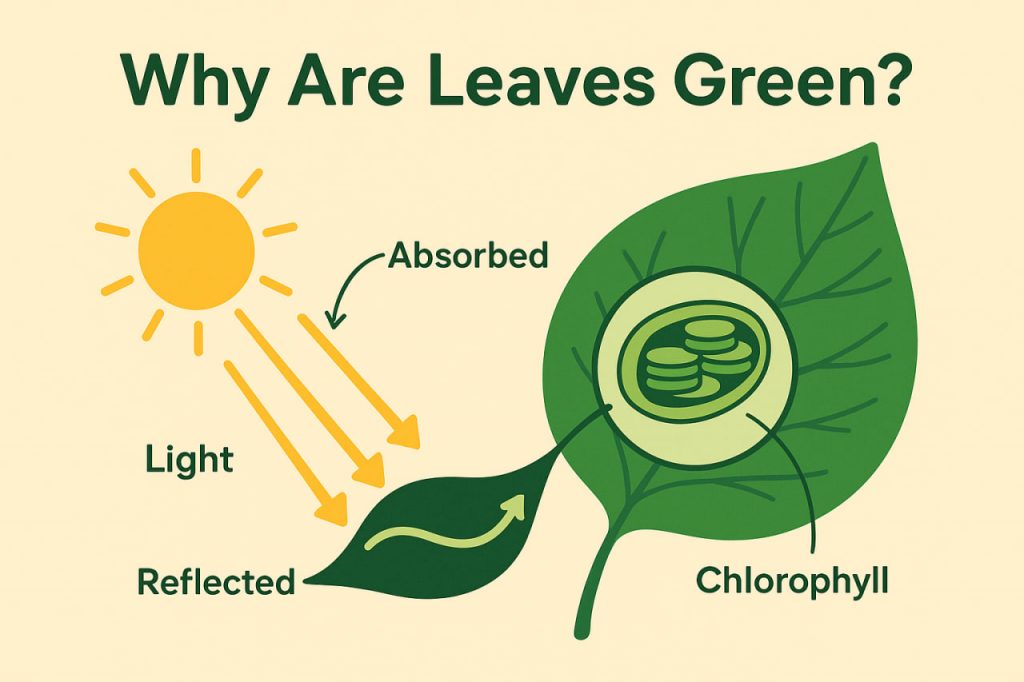When you walk through a forest or look at a garden, one of the most common colors you’ll see is green. But why are leaves green and not blue, red, or purple? The answer lies in a natural process called photosynthesis and a special group of molecules known as pigments.
The Role of Chlorophyll
The main reason leaves appear green is because of a pigment called chlorophyll. This pigment:
- Absorbs sunlight to help the plant make food
- Is found in the chloroplasts of plant cells
- Reflects green wavelengths of light and absorbs others (like red and blue)
When sunlight hits a leaf, chlorophyll absorbs most of the light energy—but reflects green light, which is why we see leaves as green.
What Is Photosynthesis?
Photosynthesis is the process by which plants use sunlight, carbon dioxide (CO₂), and water (H₂O) to make glucose (a form of sugar) and oxygen. The formula looks like this:
Sunlight + CO₂ + H₂O → Glucose + O₂
Chlorophyll is essential in capturing light energy to fuel this process.
Why Green and Not Other Colors?
Light from the Sun contains all colors of the rainbow. Chlorophyll absorbs the red and blue parts of the light spectrum most efficiently. The green part is least absorbed, so it bounces back—and that’s what our eyes see.
If chlorophyll absorbed green light, leaves would appear another color.
Are Leaves Always Green?
No. While chlorophyll dominates during spring and summer, leaves can change color:
- In autumn, cooler temperatures and shorter days cause chlorophyll to break down
- This reveals other pigments, like:
- Carotenoids (yellow/orange)
- Anthocyanins (red/purple)
- That’s why trees display brilliant fall colors before the leaves drop
Other Factors That Affect Leaf Color
- Plant species: Some plants naturally have purple, red, or variegated leaves due to other pigments
- Light exposure: Shade-grown leaves may look darker green
- Nutrient levels: Nitrogen deficiency can make leaves pale
- Disease or stress: Can cause yellowing or spotting
Conclusion
Leaves are green because they contain chlorophyll, a pigment that captures sunlight to help the plant make food. Green is the result of light that chlorophyll doesn’t absorb. This elegant system not only powers plants but supports nearly all life on Earth through oxygen and food production.
Glossary
- Chlorophyll: The green pigment in plants that helps capture sunlight
- Photosynthesis: The process by which plants make food from sunlight
- Pigment: A substance that gives color to plants or other materials
- Carotenoids: Pigments that give yellow and orange color
- Anthocyanins: Pigments responsible for red and purple hues



Great web site. Plenty of useful info here. I’m sending it to a few pals ans also sharing in delicious.
And of course, thanks for your sweat!
Thank you!